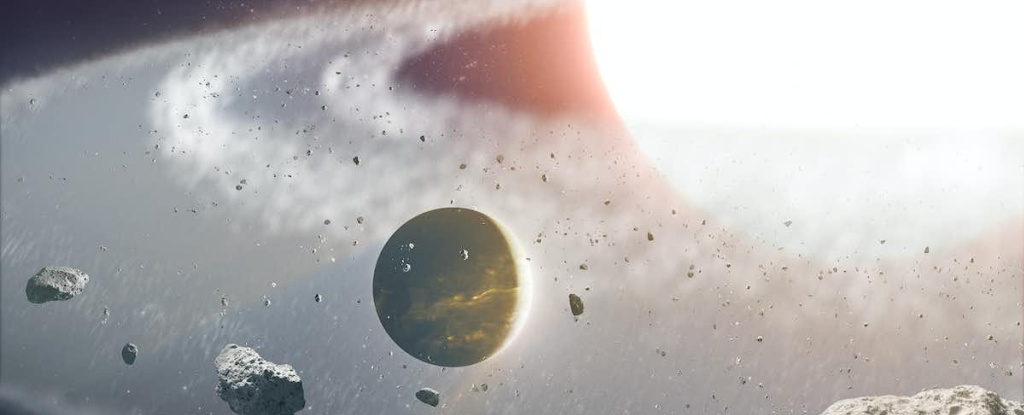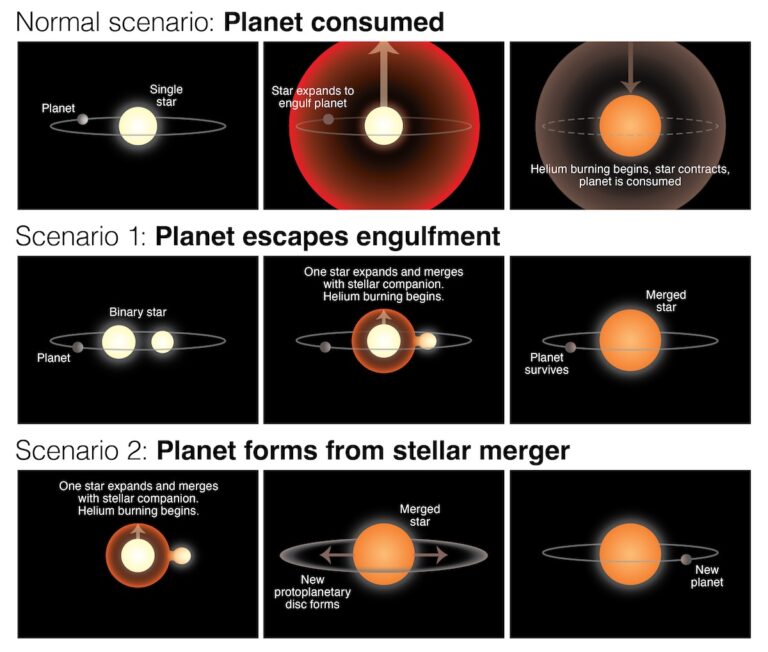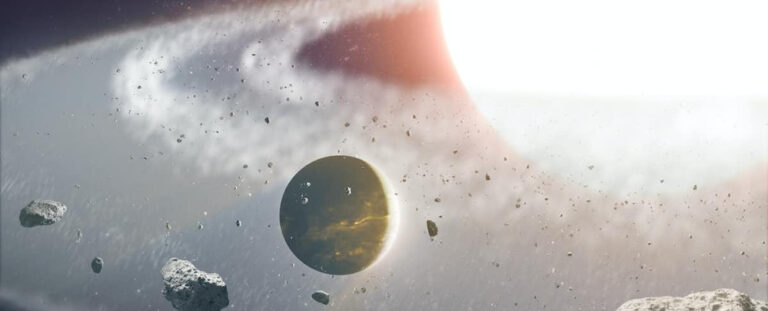Existence Beyond Death? Researchers Unearth an Anomalous Planet
The pursuit of exoplanets, celestial bodies outside our Solar System, has become a rapidly expanding field within astronomy.
In recent decades, the detection of over 5,000 exoplanets has occurred, leading astronomers to estimate that, on average, each star in our galaxy hosts at least one planet. The primary focus of many ongoing research initiatives revolves around identifying Earth-like planets that could potentially support life. These endeavors concentrate on “main sequence” stars similar to our Sun, which generate energy by fusing hydrogen atoms into helium within their cores and maintain stability for billions of years. The majority of known exoplanets, exceeding 90%, have been discovered orbiting main-sequence stars.

As members of an international team of astronomers, we investigated a star resembling what our Sun will become billions of years from now and made an intriguing discovery. Despite expectations, this star possesses a planet that should have been consumed by now. In our recently published research in the journal Nature, we present the enigma surrounding the existence of this planet and propose potential explanations.
A glimpse into our future: red giant stars
Similar to humans, stars experience transformations as they age. Once a star depletes its hydrogen fuel in the core, the core contracts while the outer envelope expands, leading to the star’s cooling.
During the phase known as the “red giant” stage, stars can expand to over 100 times their original size. In approximately 5 billion years, our Sun is projected to reach this stage, enlarging to the extent that it will engulf Mercury, Venus, and possibly Earth.
Subsequently, the star’s core reaches the necessary temperature for helium fusion to begin. During this phase, the star contracts and shrinks to about 10 times its original size, sustaining stable fusion for millions of years.
Numerous planets have been identified in orbit around red giant stars, including one called 8 Ursae Minoris b. This planet, with a mass similar to Jupiter, orbits its star at a distance only half as far as Earth is from the Sun.
The planet was initially detected in 2015 by a group of Korean astronomers utilizing the “Doppler wobble” technique, which measures the gravitational influence of the planet on its star. In 2019, the International Astronomical Union designated the star as Baekdu and the planet as Halla, after the tallest mountains on the Korean peninsula.
A planet that should not be there
Through the analysis of recently obtained data from NASA’s Transiting Exoplanet Survey Satellite (TESS) space telescope, a surprising revelation has emerged concerning Baekdu, the red giant star. Unlike other red giants known to host exoplanets in close-in orbits, Baekdu has already initiated the fusion of helium in its core.
Utilizing the scientific methodology of asteroseismology, which investigates internal waves within stars, researchers can determine the specific elements a star is currently undergoing fusion with. In the case of Baekdu, the frequencies of these waves unequivocally indicate that helium fusion has commenced within its core.
This discovery poses a perplexing question: if Baekdu is actively fusing helium, it should have been significantly larger in the past, potentially to the extent of engulfing the planet Halla. How then did Halla manage to survive?
As is customary in scientific exploration, the initial step was to dismiss the most straightforward explanation: the possibility that Halla never existed at all. Indeed, certain instances where planets orbiting red giants were initially detected using the Doppler wobble technique turned out to be illusory, resulting from long-term variations in the star’s behavior.
Nevertheless, subsequent observations conclusively ruled out the false-positive scenario for Halla. The Doppler signal originating from Baekdu has remained stable for the past 13 years, and an exhaustive examination of other indicators presented no alternative explanations for the signal. Therefore, Halla’s existence is verified, leading us back to the enigma of how it evaded engulfment by the star.
Two stars become one: a possible survival scenario
After verifying the presence of the planet, we have identified two plausible scenarios that could potentially elucidate the observed circumstances involving Baekdu and Halla.

If Baekdu was initially part of a binary star system, which is the case for at least half of all stars in our galaxy rather than forming in isolation like our Sun, it is possible that Halla never faced the risk of being engulfed. The merger of these two stars could have hindered their expansion to a size capable of engulfing the planet. In this scenario, if one star had evolved into a red giant independently, it would have engulfed Halla. However, through the merger with a companion star, the combined star could have directly transitioned to the helium-burning phase without reaching a size that would endanger the planet.
Alternatively, Halla might be a relatively young planet. The violent collision between the two stars could have generated a cloud of gas and dust, providing the necessary material for the formation of the planet. In other words, Halla could be considered a “second generation” planet, recently born as a result of the stellar collision.
Regardless of which explanation holds true, the discovery of a close-in planet orbiting a red giant star in the helium-burning phase highlights nature’s ability to manifest exoplanets in unexpected locations.
Daniel Huber, Astronomer, University of Sydney
Do not forget to share your opinion with us to provide you with the best posts !




0 Comments